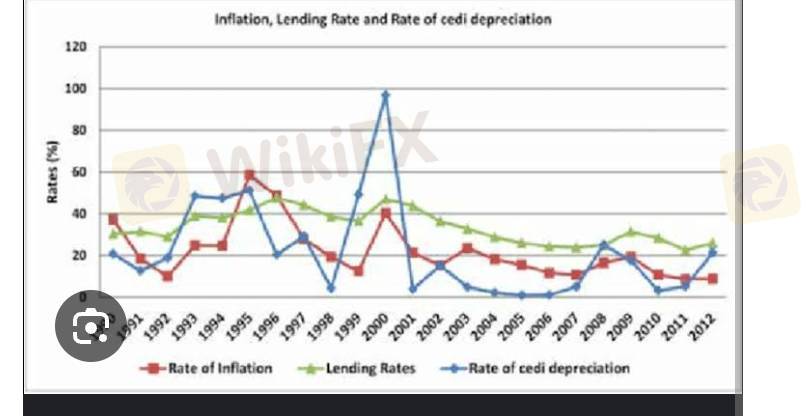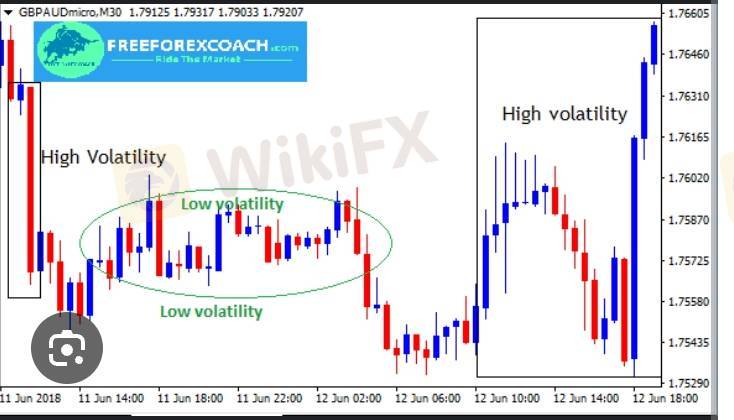
2025-02-12 16:34
A l'instar de l'industrieThe role of commodity prices in forex volatility
Commodity prices play a significant role in forex volatility, particularly for currencies closely tied to commodity exports. Here's a breakdown:
Factors Linking Commodity Prices to Forex Volatility
1. *Export-driven economies*: Countries heavily reliant on commodity exports, such as Australia (gold, iron ore), Canada (oil, timber), and Brazil (soybeans, iron ore), see their currencies closely correlated with commodity price fluctuations.
2. *Terms of trade*: Changes in commodity prices affect a country's terms of trade, influencing its trade balance and, subsequently, its currency value.
3. *Inflation expectations*: Commodity price movements can impact inflation expectations, which, in turn, influence interest rates and currency values.
4. *Risk sentiment*: Commodity prices can reflect broader market sentiment, with changes in commodity prices influencing risk appetite and, consequently, forex volatility.
Key Commodities Influencing Forex Volatility
1. *Oil*: As the most widely traded commodity, oil price fluctuations significantly impact currencies, particularly those of oil-exporting countries like Canada, Norway, and Russia.
2. *Gold*: As a safe-haven asset, gold prices can influence currencies, especially during times of market stress or uncertainty.
3. *Agricultural commodities*: Prices of crops like soybeans, wheat, and corn can impact currencies of major agricultural exporters, such as Brazil, Argentina, and Australia.
Forex Pairs Most Affected by Commodity Prices
1. *AUD/USD*: The Australian dollar is heavily influenced by gold, iron ore, and coal prices.
2. *CAD/USD*: The Canadian dollar is closely tied to oil prices.
3. *BRL/USD*: The Brazilian real is affected by soybean, iron ore, and coffee prices.
4. *NOK/USD*: The Norwegian krone is influenced by oil prices.
Strategies for Managing Forex Volatility Due to Commodity Prices
1. *Diversification*: Spread investments across various asset classes and currencies to minimize exposure to commodity price fluctuations.
2. *Hedging*: Use derivatives, such as options or futures, to mitigate potential losses from commodity price movements.
3. *Active management*: Continuously monitor commodity prices and adjust forex positions accordingly.
4. *Fundamental analysis*: Consider the impact of commodity price changes on a country's economy and currency value.
#firstdealofthenewyearastylz
J'aime 0

FX1866544709
Courtiers
Discussions recherchées
A l'instar de l'industrie
WikiFX recrute: Un(e) spécialiste e-marketing Forex à temps partiel
A l'instar de l'industrie
Tirages au sort WikiFX - Tentez votre chance pour gagner un crédit d’appel !
A l'instar de l'industrie
WikiFX recrute un(e) spécialiste marketing
A l'instar de l'industrie
Chemin à la fortune : Indications de l'activité Airdrop WikiBit
Analyse de marché
construction
A l'instar de l'industrie
Route à la Fortune : Indications de l'activité Airdrop Spécial WikiBit
Catégorisation des marchés

Plateformes

Signalement

Agents

Recrutement

EA

A l'instar de l'industrie

Marché

Indicateur
The role of commodity prices in forex volatility
 Hong Kong | 2025-02-12 16:34
Hong Kong | 2025-02-12 16:34Commodity prices play a significant role in forex volatility, particularly for currencies closely tied to commodity exports. Here's a breakdown:
Factors Linking Commodity Prices to Forex Volatility
1. *Export-driven economies*: Countries heavily reliant on commodity exports, such as Australia (gold, iron ore), Canada (oil, timber), and Brazil (soybeans, iron ore), see their currencies closely correlated with commodity price fluctuations.
2. *Terms of trade*: Changes in commodity prices affect a country's terms of trade, influencing its trade balance and, subsequently, its currency value.
3. *Inflation expectations*: Commodity price movements can impact inflation expectations, which, in turn, influence interest rates and currency values.
4. *Risk sentiment*: Commodity prices can reflect broader market sentiment, with changes in commodity prices influencing risk appetite and, consequently, forex volatility.
Key Commodities Influencing Forex Volatility
1. *Oil*: As the most widely traded commodity, oil price fluctuations significantly impact currencies, particularly those of oil-exporting countries like Canada, Norway, and Russia.
2. *Gold*: As a safe-haven asset, gold prices can influence currencies, especially during times of market stress or uncertainty.
3. *Agricultural commodities*: Prices of crops like soybeans, wheat, and corn can impact currencies of major agricultural exporters, such as Brazil, Argentina, and Australia.
Forex Pairs Most Affected by Commodity Prices
1. *AUD/USD*: The Australian dollar is heavily influenced by gold, iron ore, and coal prices.
2. *CAD/USD*: The Canadian dollar is closely tied to oil prices.
3. *BRL/USD*: The Brazilian real is affected by soybean, iron ore, and coffee prices.
4. *NOK/USD*: The Norwegian krone is influenced by oil prices.
Strategies for Managing Forex Volatility Due to Commodity Prices
1. *Diversification*: Spread investments across various asset classes and currencies to minimize exposure to commodity price fluctuations.
2. *Hedging*: Use derivatives, such as options or futures, to mitigate potential losses from commodity price movements.
3. *Active management*: Continuously monitor commodity prices and adjust forex positions accordingly.
4. *Fundamental analysis*: Consider the impact of commodity price changes on a country's economy and currency value.
#firstdealofthenewyearastylz
J'aime 0
Je veux faire un commentaire aussi.
Poser une question
0commentaires

Aucun commentaire pour l'instant. Soyez le premier de faire un commentaire !




Poser une question
Aucun commentaire pour l'instant. Soyez le premier de faire un commentaire !